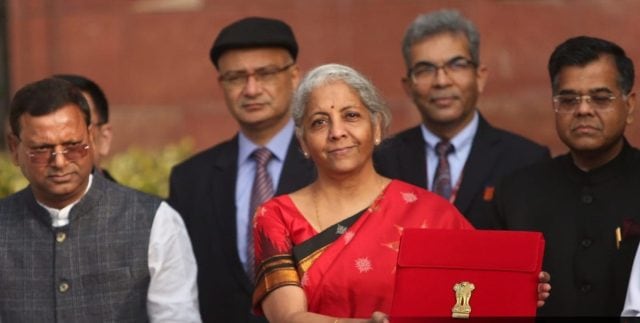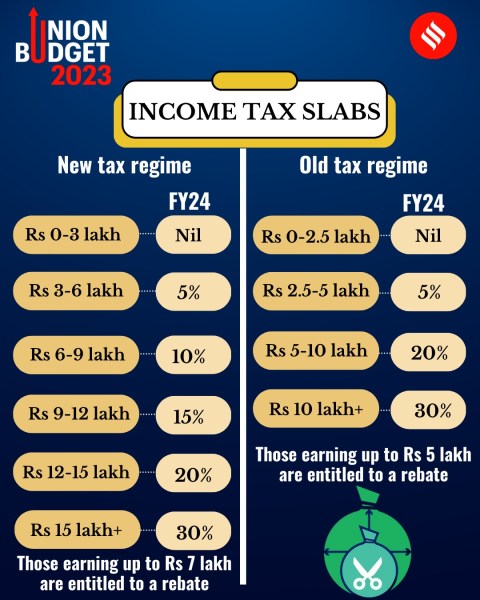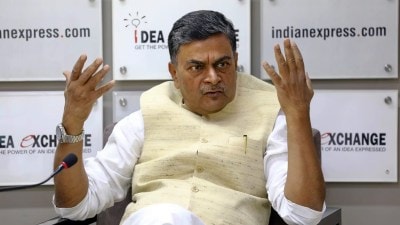New tax regime, Capex push: A comprehensive guide to Budget 2023
Union Budget 2023 Key Highlights: From tax breaks, to growth strategy, we decode the Union Budget 2023.
 Finance Minister Nirmala Sitharaman ahead of Budget presentation in New Delhi on Wednesday. (Express Photo by Gajendra Yadav)
Finance Minister Nirmala Sitharaman ahead of Budget presentation in New Delhi on Wednesday. (Express Photo by Gajendra Yadav) Union Budget of India Complete Guide: Union Finance Minister Nirmala Sitharaman Wednesday presented the last full-fledged Union Budget (for 2023-24) before the Lok Sabha elections of 2024. Much like in 2019, Sitharaman’s growth strategy had two main goals: one, incentivising the private sector in the economy to invest in the productive capacity and thereby create jobs and push growth. Two, increasing the capital expenditure and raising more revenues via disinvestment and privatisation.
The Budget’s message: the middle class matters
Described by some as a “middle-class bonanza”, one of the big highlights of this year’s budget was the Centre’s decision to raise the threshold at which income tax kicks in to Rs 7 lakh a year from Rs 5 lakh a year, plus a solid nudge prodding individuals to shift to a new tax regime by restructuring the tax slabs. This does key things: pushing people to a clutter-free zero exemption tax regime, to freeing up money in the hands of those earning just under Rs 60,000 a month for spending and also directing money from tax-focused saving instruments to discretionary spending or investment in the markets.
The Modi government’s big initiatives during its almost nine years in power have been largely aimed at the very poor, the farming community and corporates. By freeing individuals with annual income up to Rs 7 lakh from paying any tax, this time, the Budget signalled: The Middle Class Finally Matters.
But there are breaks for the super-rich too. The government made it attractive for the super rich (earning over Rs 5 crore) to shift to the new tax regime by offering them a hefty cut on surcharge from 37 per cent to 25 per cent, making their effective rate from 42.7 to 39 per cent.
Fresh pitch for new tax regime
The government has gone all out in its attempt to convince individual taxpayers to migrate to the new income tax regime by overhauling slabs and offering additional sops to the lowest as well as the top strata of taxpayers. In the Budget speech, Finance Minister Nirmala Sitharaman pitched hard for the new tax regime, offering a slew of incentives in comparison to the old system, and dangling the carrot of negligible compliance burden that the simplified new regime promises.

In an interview with DD News, Sitharaman spoke about the new tax regime and why it isn’t compulsory yet: “The old system is complicated and several requests in the past have been made to simplify it. Suggestions were to simplify the process, reduce taxes and improve compliance. We have done all of it in the Budget and the new system will also be the default system but not compulsory. Our intent is to gradually attract people to this new regime.” Read excerpts from the interview.
So what does it hope to achieve?
Well, Sitharaman has stuck to the growth strategy that she first unveiled in 2019: stay on the path of fiscal prudence and incentivise the private sector to invest more in the economy’s productive capacity, explains Udit Misra.
‘Nothing for poor,’ says Opposition
The Congress and several opposition parties on Wednesday panned the Budget, arguing that it has given no relief to the poor, not offered much for the electorally key middle-class barring the “minor” tax relief and has no concrete proposals for employment generation and to tackle price rise.
While the Congress called it a “callous Budget that has betrayed the hopes of the vast majority of the people,” the Left termed it contractionary and anti-people. West Bengal Chief Minister Mamata Banerjee said the Budget, which will benefit only one class of people, was “not futuristic”, “totally opportunistic”, anti-people and anti-poor.
Insurance loses tax-saving lustre
As the fine print became clear on the Union Budget, the shares of life insurance companies fell sharply. Reason: Word had trickled into the markets by then that the tweaks in slabs and rates in the new tax regime (NTR) may result in tax-payers shifting from the old regime — and lead to a dip in demand for life insurance products as tax-saving instruments. This sentiment was reinforced by another announcement about imposing tax on income from life insurance products — other than ULIPs, which already have a cap — where the total annual premium exceeds Rs 5 lakh.
What’s in it for the elderly?
The Union Budget has proposed more incentives to senior citizens and women to save more money at a better interest rate. Sitharaman announced a new savings scheme for women and hiked the limit for Senior Citizens Savings Scheme and Monthly Investment Scheme (MIS).
Presenting the Union Budget, Sitharaman said a one-time new small savings scheme, Mahila Samman Savings Certificate, will be made available for a two-year period up to March 2025 for commemorating Azadi Ka Amrit Mahotsav. This will offer deposit facility up to Rs 2 lakh in the name of women or girls for a tenure of two years at a fixed interest rate of 7.5 per cent with partial withdrawal option. The interest rate under this scheme is higher than the rates offered by banks for a similar period.



- 01
- 02
- 03
- 04
- 05




























